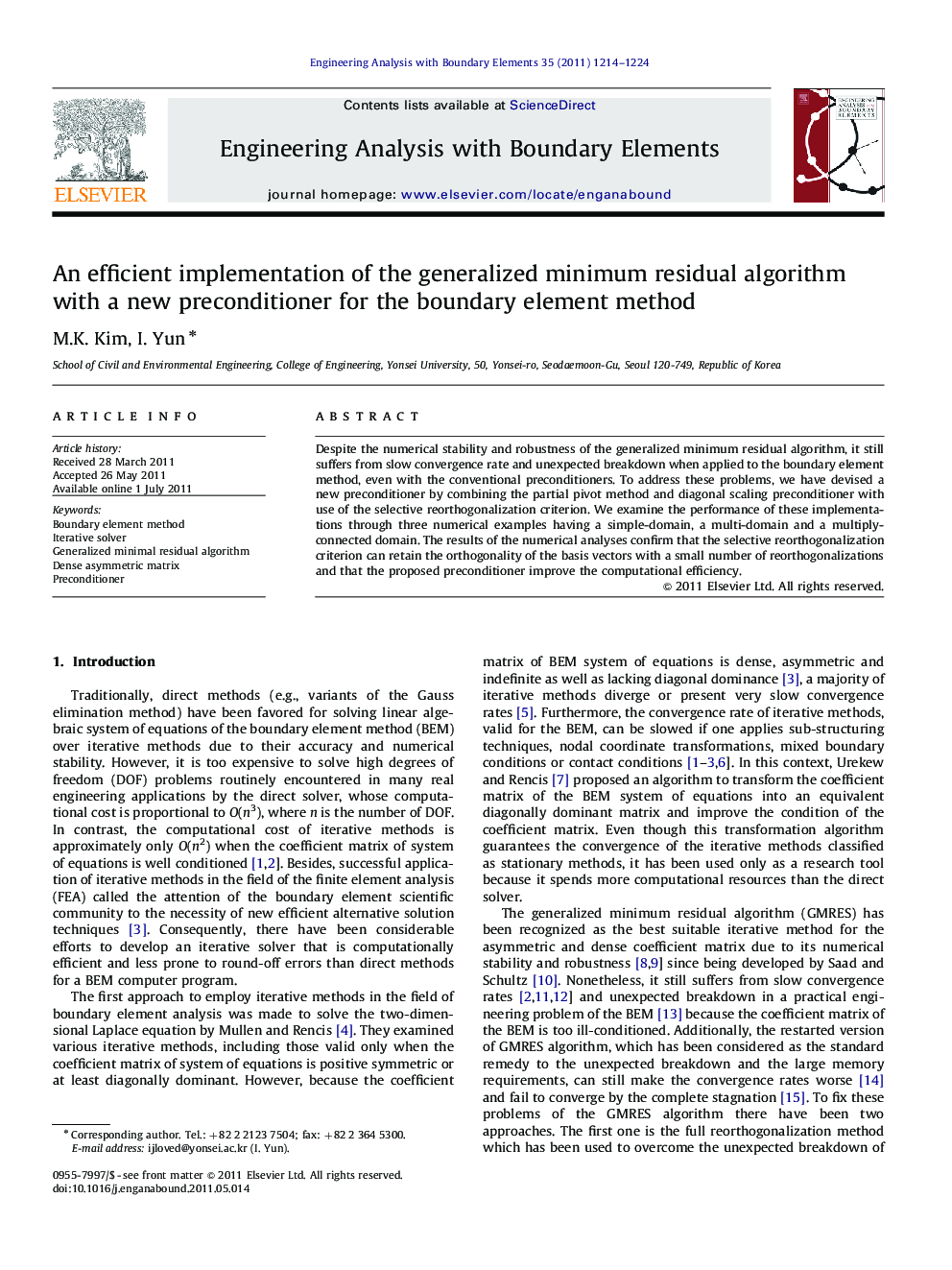| Article ID | Journal | Published Year | Pages | File Type |
|---|---|---|---|---|
| 512766 | Engineering Analysis with Boundary Elements | 2011 | 11 Pages |
Despite the numerical stability and robustness of the generalized minimum residual algorithm, it still suffers from slow convergence rate and unexpected breakdown when applied to the boundary element method, even with the conventional preconditioners. To address these problems, we have devised a new preconditioner by combining the partial pivot method and diagonal scaling preconditioner with use of the selective reorthogonalization criterion. We examine the performance of these implementations through three numerical examples having a simple-domain, a multi-domain and a multiply-connected domain. The results of the numerical analyses confirm that the selective reorthogonalization criterion can retain the orthogonality of the basis vectors with a small number of reorthogonalizations and that the proposed preconditioner improve the computational efficiency.
► We present an efficient implementation of the GMRES algorithm for the BEM. ► Main causes of the slow convergence were investigated by plots of coefficient matrices. ► A new preconditioner is devised and a selective reorthogonalization is employed. ► The performances of these are demonstrated through three numerical examples.
